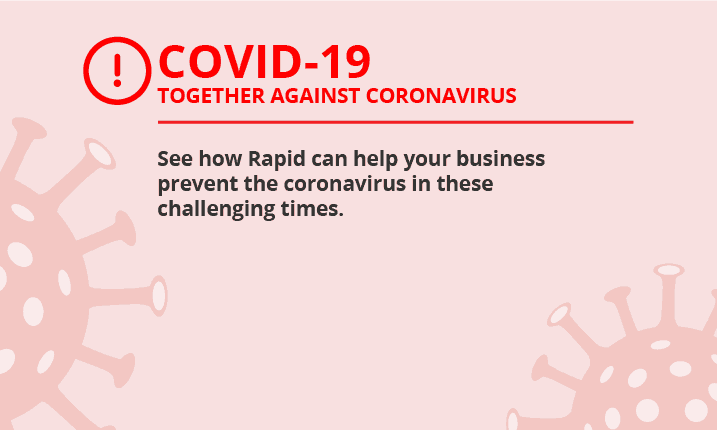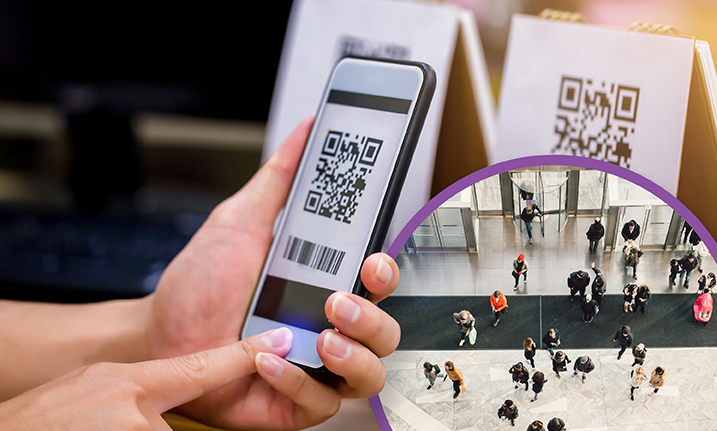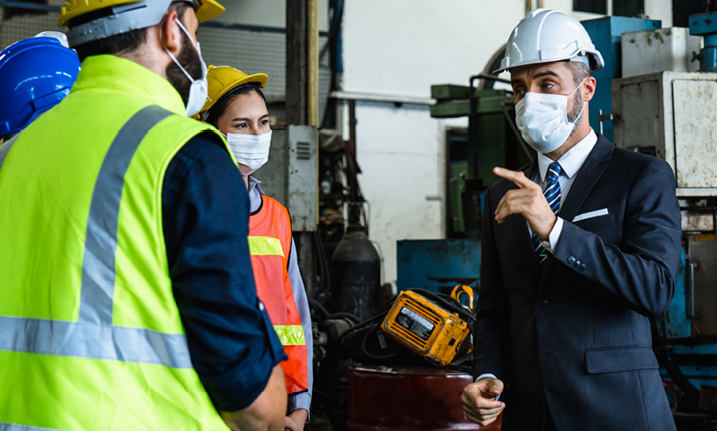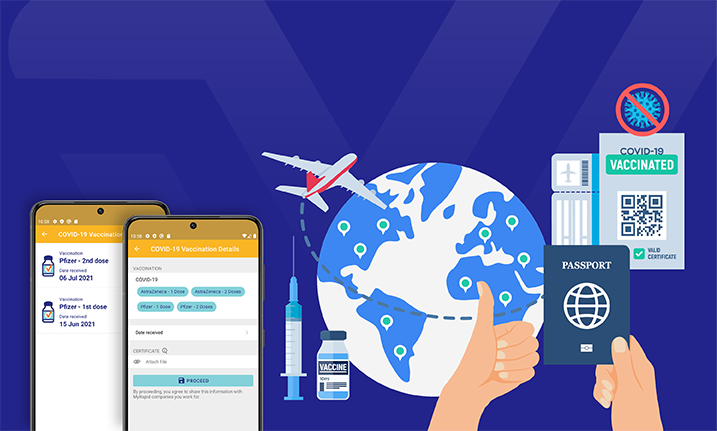

Businesses have already faced the reality of adjusting during the global pandemic and have adapted business models to minimise risks and the effects of the pandemic.
One key element moving forward will be visitor management systems which are critical to managing COVID safety and business continuity planning.
The role of risk assessment in a post-COVID world
According to Gartner Business Continuity Survey, only 12% of organisations were highly prepared for the impacts of coronavirus.
“The best-prepared organisations will manage the disruption caused by the coronavirus far better than their less-prepared peers,” said Matt Shinkman, Vice President in the Gartner Risk and Audit practice.
It’s likely those ‘prepared organisations’ had a solid Business Continuity Plan – which is a plan and strategy that sets out some key points:
- how you will prepare for a crisis and continue to operate
- minimise or eliminate risks
- minimise recovery time
- reduce business loss
Essentially, there are four elements to include in a Business Continuity Plan:
- Risk Management
- Business Impact Analysis
- Incident Response
- Recovery Plan
As you can see, it all starts with a risk assessment, which can anticipate risks, act as an early-warning system, help with crisis management, as well as help to recover or continue with urgent or critical business processes.
This is a crucial first step for leaders to take in the quest for business continuity. Because without a full risk assessment, there is no way of identifying your strengths and weaknesses. Once you have analysed the data from the risk assessment, you can move to implementing response plans.
Related reading: How risk management technology is changing the Work Health and Safety landscape
The crucial role of visitor management systems
Responding to a crisis becomes straightforward, thanks to the multiple functionalities of a visitor management system like Rapid Access. If you need to implement safe working practices in response to a crisis, then it’s likely to start at the entrance of your building.
For example, you might need to begin very quickly screening any visitors or contractors who enter your buildings, factories, offices, warehouses, and food processing plants.
With Rapid Access, you will be able to adjust your forms on all kiosks, asking visitors and staff pre-screening questions, before they arrive on site.
At Rapid Global, we have been helping businesses such as Bega Cheese to manage their Coronavirus WHS risk. An example screening process using Rapid Access looks something like this:
- Visitor arrives at the gate/reception area.
- Each visitor is queried about the purpose of their visit and assigned a visitor type. E.g. a contractor carrying out routine maintenance, a delivery driver unloading raw materials, or a sales rep visiting the office.
- Different visitor types trigger different sets of questions. E.g. an office staff member will be asked different questions to a contract electrician.
- Visitors may be denied entry to the site if they are flagged as high-risk during the screening. For instance, displaying signs of flu or a fever, returning from international travel in the last 14 days etc.
- If someone is denied entry, the Site Manager is immediately notified by text message.
Of course, this is just one element of a Risk Management Plan. Rapid Access can help make the processes both accurate and efficient with the system allowing tiered responses to each screening question.
6 reasons why a visitor management system can improve your response and recovery
As we saw above, with the need to respond and then recover from any crisis, there are several good reasons why a visitor management system can improve your response and recovery.
1. Visitor management systems help to maintain a safe and secure environment
Four in five workers surveyed in an Australian study experienced fears around catching or spreading COVID-19 upon return to their worksite.
So, it’s easy to see how a visitor management system can help alleviate some of these fears and create a safe working environment.
With Rapid Access you can:
- Integrate with site access hardware such as gates, kiosks, and swipe card systems.
- Screen and monitor the entry/exit of site visitors, employees, and contractors across multiple sites in real-time.
- Screen visitors at check-in with a customised COVID declaration form and customised check-in surveys.
- Ensure only fully compliant personnel gain access to your site, and when integrated with Rapid Contractor Manager and Rapid Induct you can also check the status of site inductions and training.
- Upload and store compliance documentation, insurances, permits, flu and COVID vaccination certificates before a visitor arrives on site.
- Allocate a host for all site visitors which is great for unmanned receptions.
- Print wearable labels and ID cards with the visitor’s photograph and details as a visual cue during their visit.
2. Visitor management systems help you respond quickly in an emergency, reduce downtime, and recover quickly
Crucial to any good response plan or emergency is the ability to act quickly. With Rapid Access you can:
- Generate an evacuation list.
- Automatically notify all site visitors in the event of an emergency evacuation.
- Entry and exit data can be used to initiate COVID contact tracing earlier, isolate potential contacts and stop the spread of the virus sooner.
Incident Recovery Checklist
Download our free Incident Recovery Checklist to develop a clear incident response plan with actionable steps.
DOWNLOAD CHECKLIST3. Visitor management systems are more reliable and efficient than paper logbooks
Digital visitor management systems are a safer way to handle sensitive visitor data privacy and security. With Rapid Access you can:
- Store and encrypt data in the cloud, and set permissions so that only authorised personnel have access to the data.
- A contactless check-in system will help you offer your visitors a safer way to check-in and reduce the spread of COVID in the workplace.
- Quickly and discreetly monitor visitors that need special attention or that have been denied access to your site, for non-compliance.
4. Visitor management systems assist with the management of changing COVID-19 legislation and requirements
Achieve compliance and manage all requirements easily: Rapid Access can:
- Help to manage site capacity limits and COVID social distancing requirements.
- Keep detailed user data and entry/exit logs for contract tracing requirements, and in the event of a COVID outbreak on your site, you’ll be able to react quickly to isolate potentially infected employees and initiate deep cleaning etc.
- Manage and store COVID vaccine certificates and testing results.
5. Visitor management systems assist to promote wellness in the workplace
The simple presence of a visitor management system that is updated with the latest COVID requirements can help to promote a general culture of wellness in the workplace. People are more likely to remember to socially distance themselves, regularly wash hands, and stay away if they are sick, all because they see a culture of safety.
6. Visitor management systems assist with brand and customer trust
Think about the ever-changing expectations as we move through this pandemic… People now expect all businesses to have integrated most of the new requirements and will expect a higher level of accountability if there is an outbreak. If you can implement and show your systems are up to date and consider the ever-changing requirements, then you can put forward a modern and reliable brand.
Related reading: Creating strategic risk reports for managers, executives, and key personnel.
Need a better way to manage your business continuity strategy? Rapid can help
Get in touch with our experts to find out how Rapid’s products can support your business continuity strategies. Request a demo today and one of our friendly sales experts will arrange a meeting with you.







